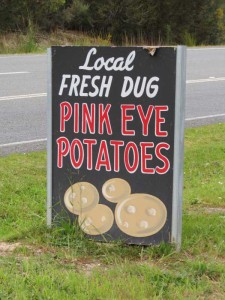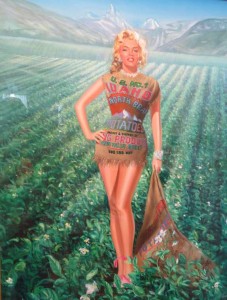Bottling Day
/ Despite the fact we had a busy day, David tested his brew last night and the specific gravity had remained the same for two days in a row. It was bottling day. We'd used the brown plastic beer bottles and caps before, so he had to sterilize them before bottling the new brew. In the boat, it's sometimes difficult to find space to accomplish such tasks, but he managed to spread out using every flat surface he could find available and got the job done.
In addition to the actual brew materials, we were able to buy the sterilizing powder and a sturdy bottle brush at the Tasmanian Brewing Supplies Store (innovative store name, don't you think?). He mixed the required amount of powder with water in my big pressure canner pot, the only vessel large enough to accommodate this amount of liquid. He filled the bottles and let them soak for a couple of hours and then he was ready to begin the bottling process.
Despite the fact we had a busy day, David tested his brew last night and the specific gravity had remained the same for two days in a row. It was bottling day. We'd used the brown plastic beer bottles and caps before, so he had to sterilize them before bottling the new brew. In the boat, it's sometimes difficult to find space to accomplish such tasks, but he managed to spread out using every flat surface he could find available and got the job done.
In addition to the actual brew materials, we were able to buy the sterilizing powder and a sturdy bottle brush at the Tasmanian Brewing Supplies Store (innovative store name, don't you think?). He mixed the required amount of powder with water in my big pressure canner pot, the only vessel large enough to accommodate this amount of liquid. He filled the bottles and let them soak for a couple of hours and then he was ready to begin the bottling process.
 It's pretty easy. There's a spigot on the side of the brew tub with a long plastic hose which extends into the bottles. He added two sugar drops to each bottle then filled them up and screwed on the twist caps. The sugar drops increase the carbonation of the beer in the bottles. We now have 30 - .75L bottles sitting in a bin in the forward cabin … that's about 6 gallons or 23 liters of home-brewed Australia Pale Ale. They'll need to sit for another two weeks or so before they're ready to drink. That said, we usually feel the need to start testing within a week or so. Quality control is everything.
It's pretty easy. There's a spigot on the side of the brew tub with a long plastic hose which extends into the bottles. He added two sugar drops to each bottle then filled them up and screwed on the twist caps. The sugar drops increase the carbonation of the beer in the bottles. We now have 30 - .75L bottles sitting in a bin in the forward cabin … that's about 6 gallons or 23 liters of home-brewed Australia Pale Ale. They'll need to sit for another two weeks or so before they're ready to drink. That said, we usually feel the need to start testing within a week or so. Quality control is everything.
He's already started a batch of hard cider. The cider will be bottled in about 10-14 days in recycled 1.25L plastic water bottles that we've been collecting. It, too, will require a specific gravity check to confirm it's ready. It takes much longer to ferment the cider and it won't be ready till Christmas.
 We've also found brew kits for ginger beer and hard lemonade, but we need to use up our current stock to make some more room.
We've also found brew kits for ginger beer and hard lemonade, but we need to use up our current stock to make some more room.






